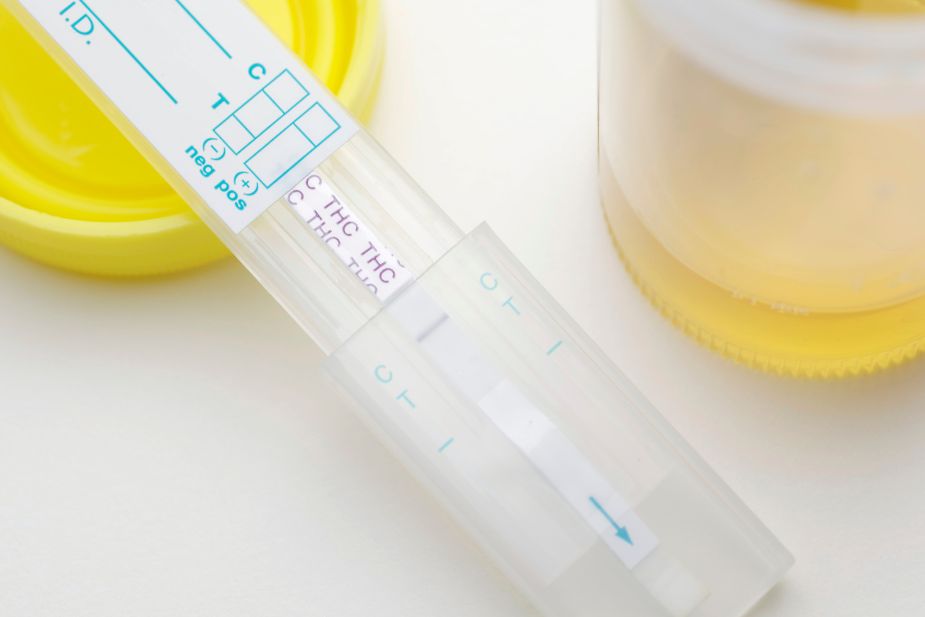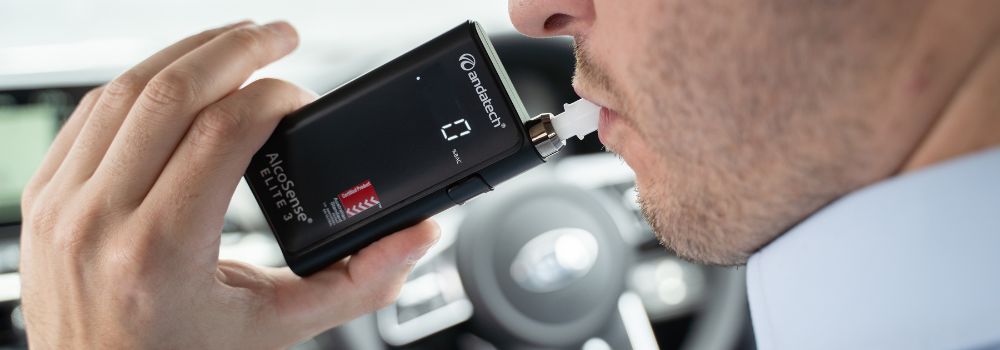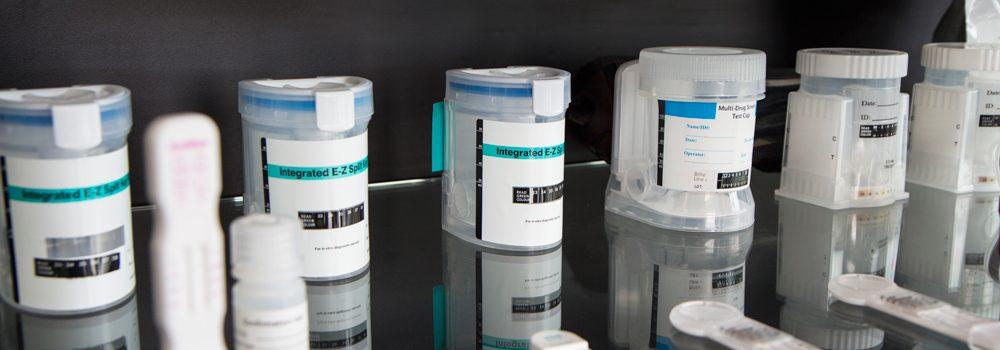How drug testing kits work is a complicated process – there are several methods, each varying in detection times, effectiveness and reliability. We aim to discuss each drug testing method in this article to help users understand the process.
Australia generally has very stringent enforcement on drug use. This is characterized by the country’s low cut-off levels for various kinds of drugs under Australian Standards. These standards target various classes of drugs including cocaine, opiates, amphetamines, cannabis or THC, and methamphetamines, which are more commonly referred to as ice or meth, and Benzodiazepines (Valium).
The presence or absence of the various kinds of drugs is determined through the use of a variety of drug testing kits. These kits will perform a technical analysis of a sample which can either be a saliva, blood, sweat, hair follicle or urine in order to detect the presence of these drugs.
Drug testing kits find wide applications. They are not only used by law enforcement authorities, but also by anti-doping agencies in sports, in medical treatments and also in the workplace. There are employers who may want to know if their staff are drug-free; this is especially so for critical operations such as mining and aviation where a worker needs to be fully alert and without any sort of drug-induced impairments.
When carrying out drug testing in Australia, it is also important to be cognizant of the cut-off levels that have been imposed under Australian drug testing standards. The Australian standard cutoffs aren’t generally mass produced like international standard cutoff testing kits, therefore you need to be aware of this when purchasing your drug testing kits.
WHAT A DRUG TESTING KIT CAN DETECT
A drug testing kit should be able to detect all the substances or stimulants that have been categorized under the Australian Standard 4308, commonly called AS4308. The AS4308 provides procedures, guidelines as well as policies for the urine testing and quantitation of the most commonly abused drugs. It is the basis for legal drug testing in Australia and is generally invoked for the detection of abused drugs in both medical and non-medical settings.
The other Australian standard for drug testing is the AS4760 that provides for procedures, guidelines and policies for drug testing in oral fluids such as saliva. These standards are prescriptive on the methods required to efficiently collect and analyze specimen for the presence of drugs and they are also used in the design of drug testing kits for the Australian market.
The Australian Standards cover the following main classes of drugs:-
- Amphetamines
- Cannabis and metabolites
- Opiates: These include Codeine, Vicodin, Heroin and Morphine among others.
- Cocaine and metabolites
- Benzodiapezines or valium
- Methamphetamines
These drugs will constitute basic drug testing. However, there are drug test kits that can be used to carry out more extensive drug tests for other classes of drugs such as:-
- Hallucinogens such as LSD, peyote and mushrooms.
- Inhalants like glue
- Barbiturates
- Anabolic steroids like the muscle building hormones
TYPES OF DRUG TESTING KITS
Drug testing kits in Australia can be broadly classified into the following:-
- Urine Drug Testing Kits
- Saliva Drug Testing Kits
- Sweat Drug Testing Kits
- Blood Drug Testing Kits
- Hair Follicle Drug Testing Kits
Continue reading on how drug testing kits work:-
HOW DRUG TESTING KITS WORK

Urine Drug Testing Kits (Urinalysis)
Urine analysis is the most popular method for testing for drugs in the system. 90% of all drug tests are usually done via urine tests. Because of its reliability, urine tests have been regarded as the “gold standard” of drug testing; guaranteed to give very reliable results. While the tests may not always be 100% accurate, they are generally close most of the time. The accuracy of the test generally depends on the quality of the kit, sample and procedures used. With low quality home kits, you are likely to get a higher rate of false positives and false negatives. Higher quality kits used in the lab give significantly better results for urine tests.
How Drug Testing Kits Work – Urine Drug Testing Kits
The urine drug testing kit utilizes enzyme immunoassay (a bio-chemical process) to detect the presence of drugs. During the urine analysis, the kit will screen a urine sample for a parent drug such as amphetamines or it will screen the sample for the metabolites of the drug. Metabolites are simply compounds that have been formed during metabolism.
How drug testing kits for urine work is through a process called competitive binding – a biochemical process. The drugs in the urine sample will compete for binding sites on their antibodies against their specific drug conjugate in the kit.
The drug testing kit is designed and calibrated in such a way that the urine sample will gradually move up via a capillary action. By factoring the specific cutoff point for the specific stimulant or drug, the drug is only able to saturate the binding sites if it is above the cutoff level in which case the drug testing kit will display a certain color to indicate whether the test is negative or positive.
Usually by the time the drug testing is being done, the drug will have metabolized. As a result, the drug testing kits generally detect only the metabolites that are not psychoactive, that is, those without a “stimulant” effect. These non psychoactive drug metabolites can stay in urine for a longer period of time, for up to two weeks or even more depending on the drug.

Saliva Drug Testing Kits
For saliva drug testing, a swab is administered to detect the presence or absence of parent drugs. The main advantage of saliva testing is that it is less invasive but it is also less reliable. Also, there is usually a very small window of only a few hours within which you can get accurate results with a saliva test.
How Drug Testing Kits Work – Saliva Drug Testing
Like urine drug testing kits, saliva drug testing kits utilize an enzyme immunoassay technique for the detection of the presence of drugs. In this mechanism, the drug metabolites will compete for binding sites on their respective antibodies with their respective drug conjugates. Just like in the urine drug testing kits, full binding and a positive test result only occurs if the concentration of the parent drug exceeds a certain cut off point that is calibrated into the instrument.
Saliva drug tests aren’t always reliable so it is advisable to get a confirmation testing. In some saliva drug testing kits, a positive sample is sometimes subjected to a further drug confirmation tests with tests such as gas chromatography and mass spectrometry tests to capture the minutest of the drug footprints in the saliva swab.

Blood Drug Testing Kits
Blood drug tests are the most accurate drug tests but they are also the most invasive because the administrator must draw some blood from your veins. This generally requires some medical qualification. Due to the difficulty and the expense, they aren’t generally used in normal drug tests.
How Blood Drug Testing Works
While the urine drug testing kits will test the presence or absence of non-psychoactive (inactive) metabolites, the blood testing kits try to detect the presence of illicit parent drugs.
There is a small screening window within which you can administer a drug test and get reliable results. This can range from 0 to 3 hours for LSD to 2 days for Cannabis. Like urine and saliva swabs, blood drug testing utilizes the enzyme immunoassay technique to detect presence of illicit drugs.

Hair Follicle Drug Testing Kits
Hair drug testing is generally preferred for some highly critical positions because the drugs can stay in the hair for a much longer period of time than in saliva, urine and blood. It is usually used in courts for probation, parole and diversionary programs. For accurate results, the hair must be harvested as close to the scalp as possible. If there is no hair on the head, the bodily hair can also be harvested for the tests. While some drugs can stay on the hair on your head or facial hair for up to 30 days, the bodily hair stores the drugs for a much longer period of time, usually for up to 12 months! However, it takes approximately 5-7 days from the time of drug use for the portion of the hair containing that drug to grow above the scalp.
How Hair Follicle Drug Testing Works
The hair follicle drug testing kits utilize gas chromatography mass spectrometry to detect for illicit drugs in the molecules of your hair follicles. It will subsequently display a positive or negative result for every drug class that you wish to test depending on the concentration of the drug vis-à-vis the cutoff point for the drug. The hair follicle drug testing kits can be used to detect numerous classes of drugs depending on the design of the individual kit.
Of course, the above explanations on how drug testing kits work are very brief. Detection times and windows can vary from user to user depending on the drug used and the frequency of drug use, among other factors. Different drug testing kits may also have different cut-off levels.
Disclaimer: The information provided in this article is for general reference only. Please seek advice from professionals according to your business’s needs.
Written by Eugene Ng









